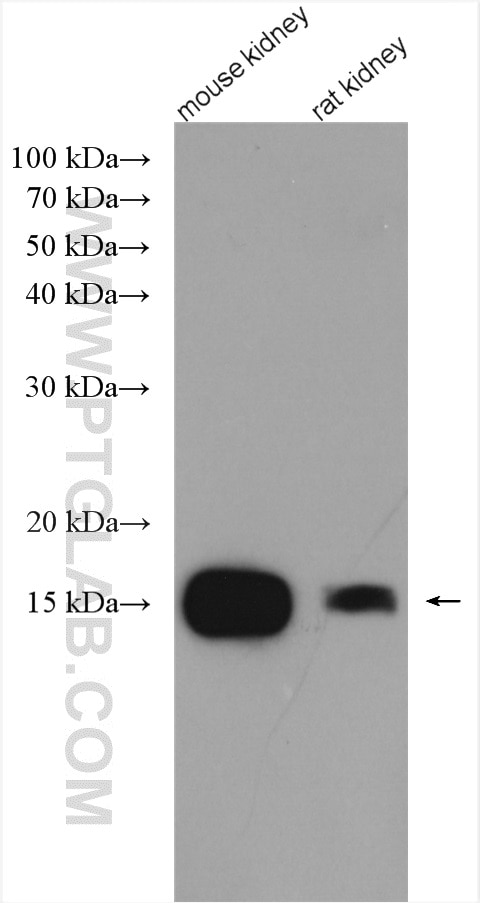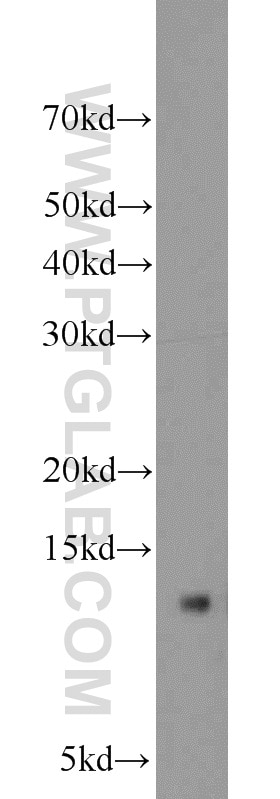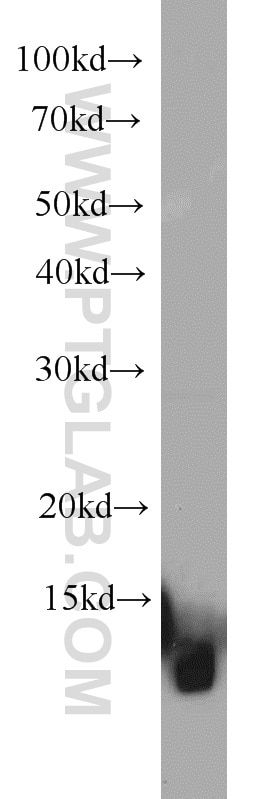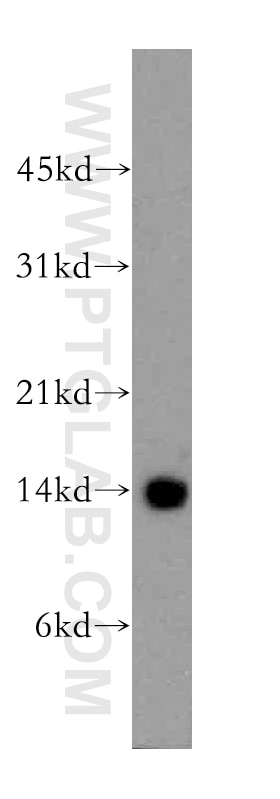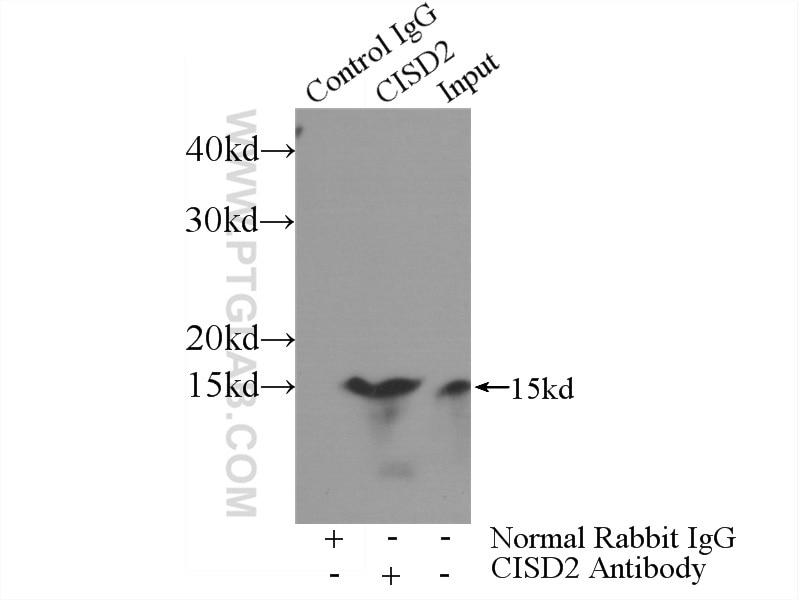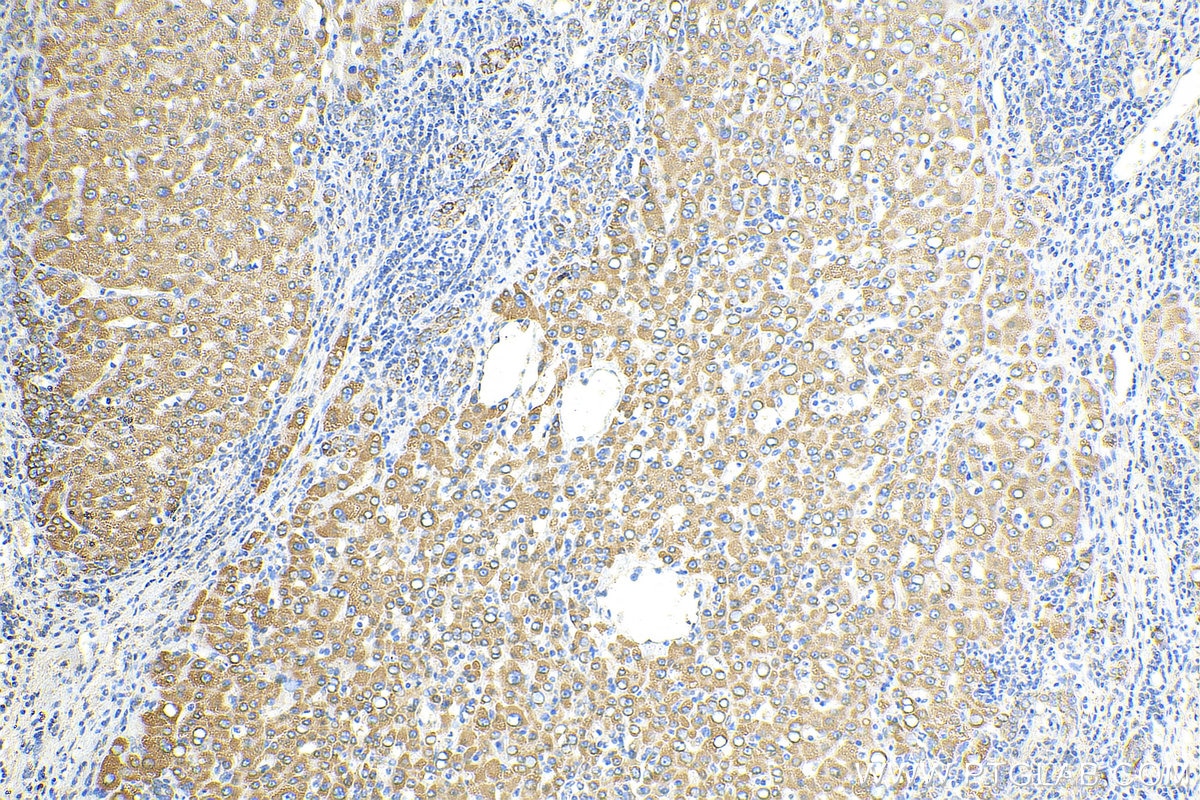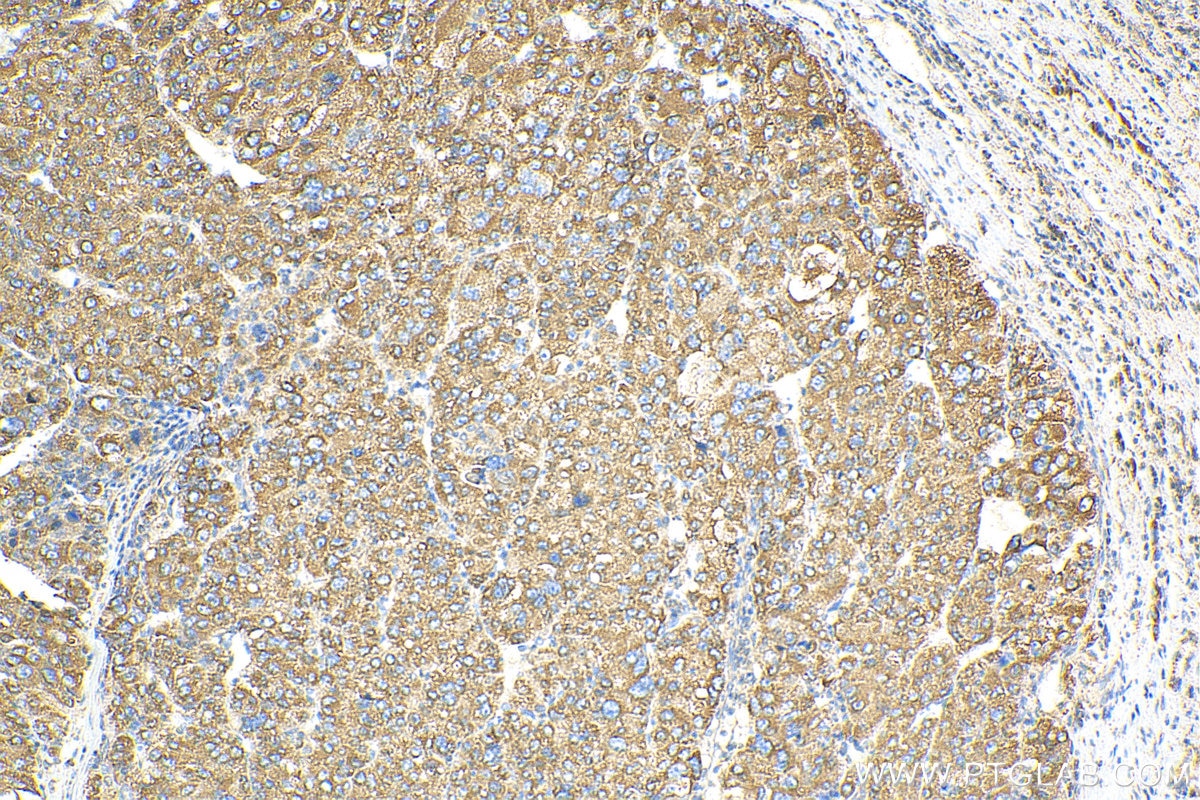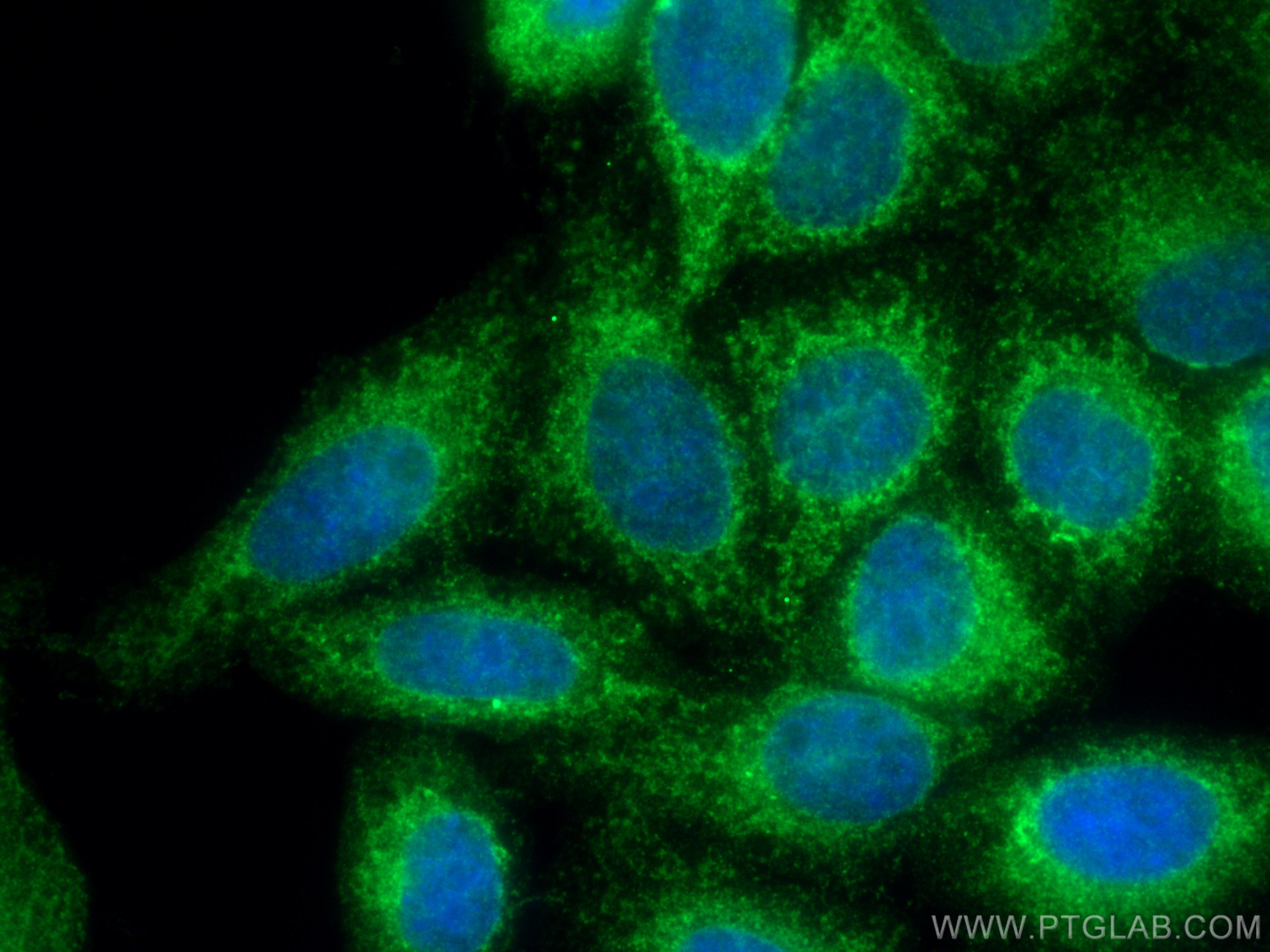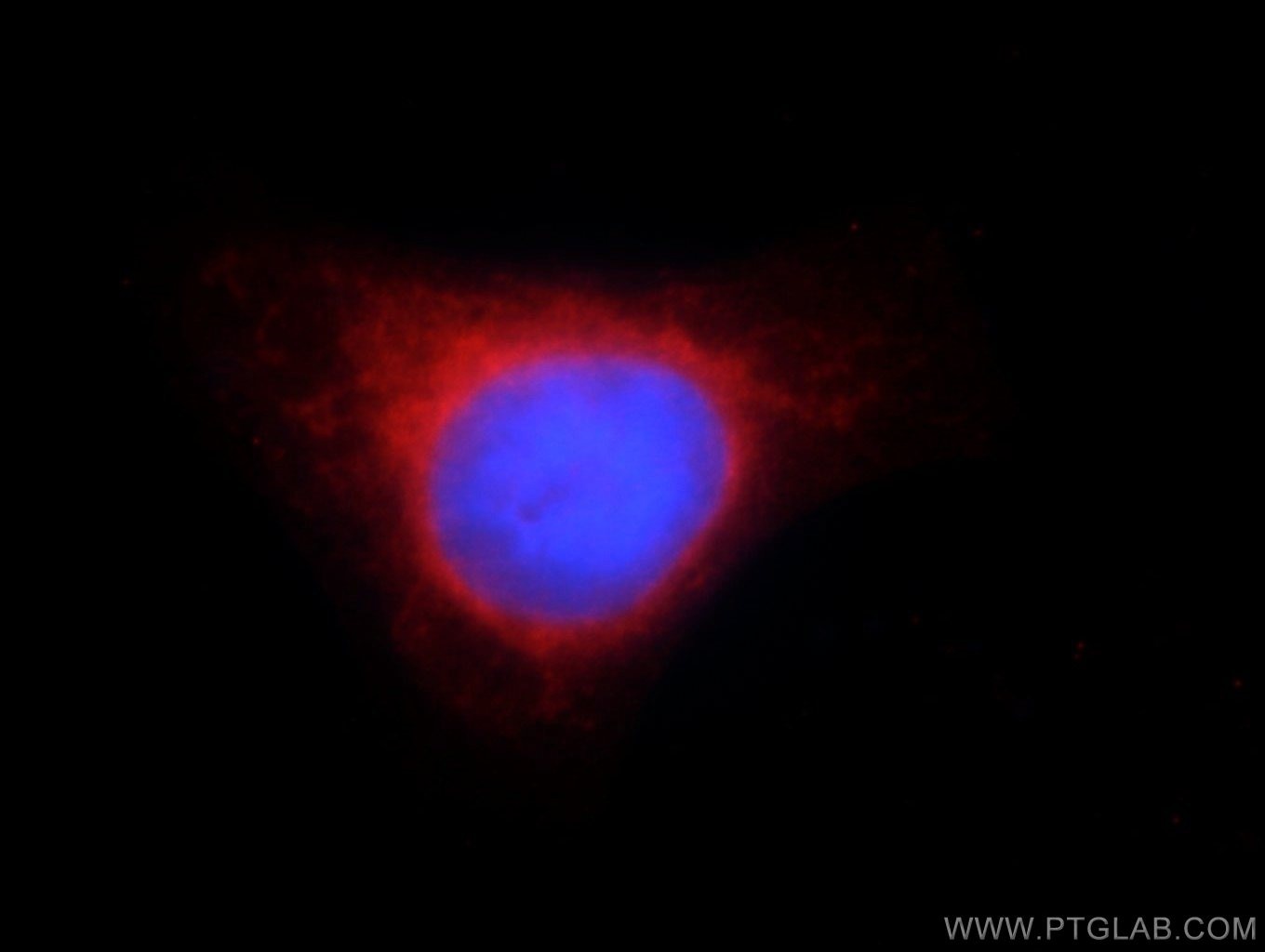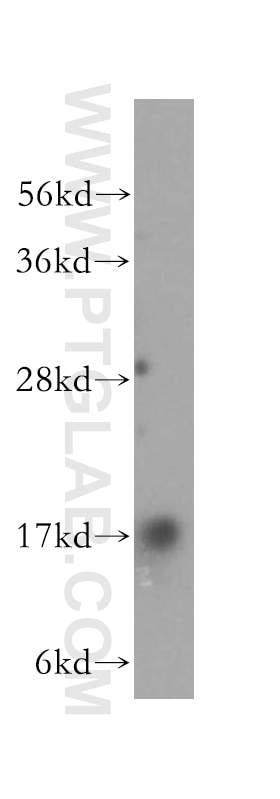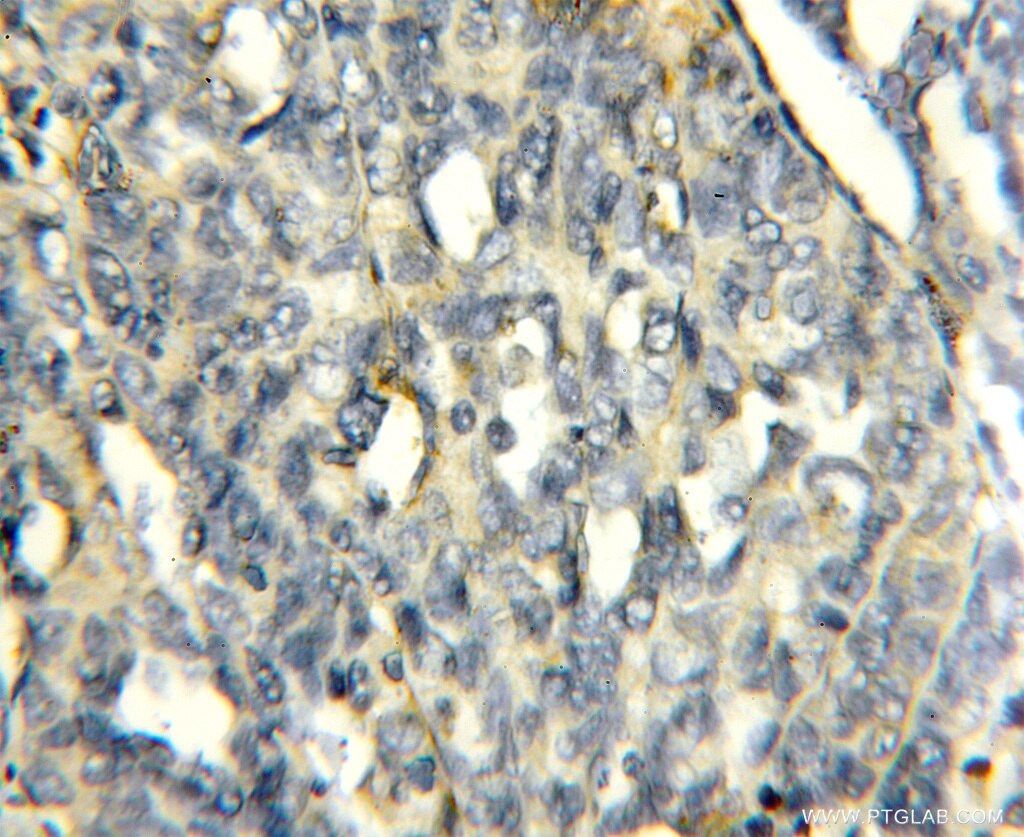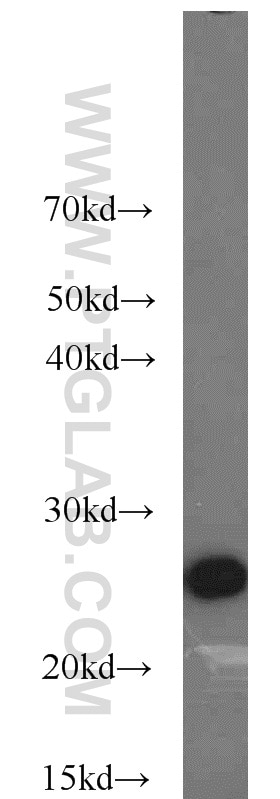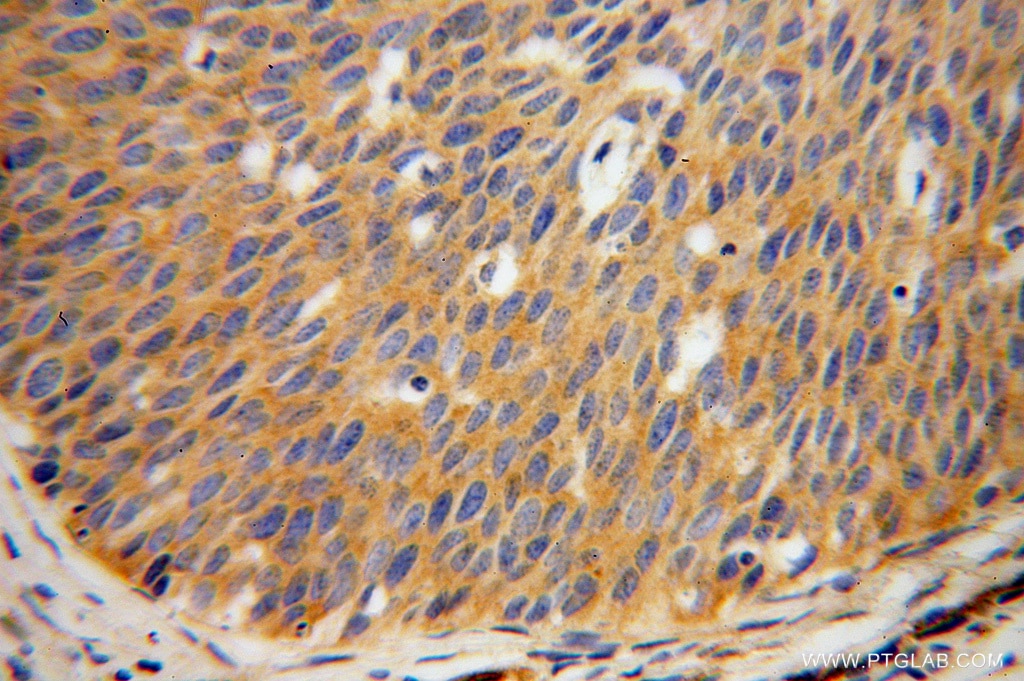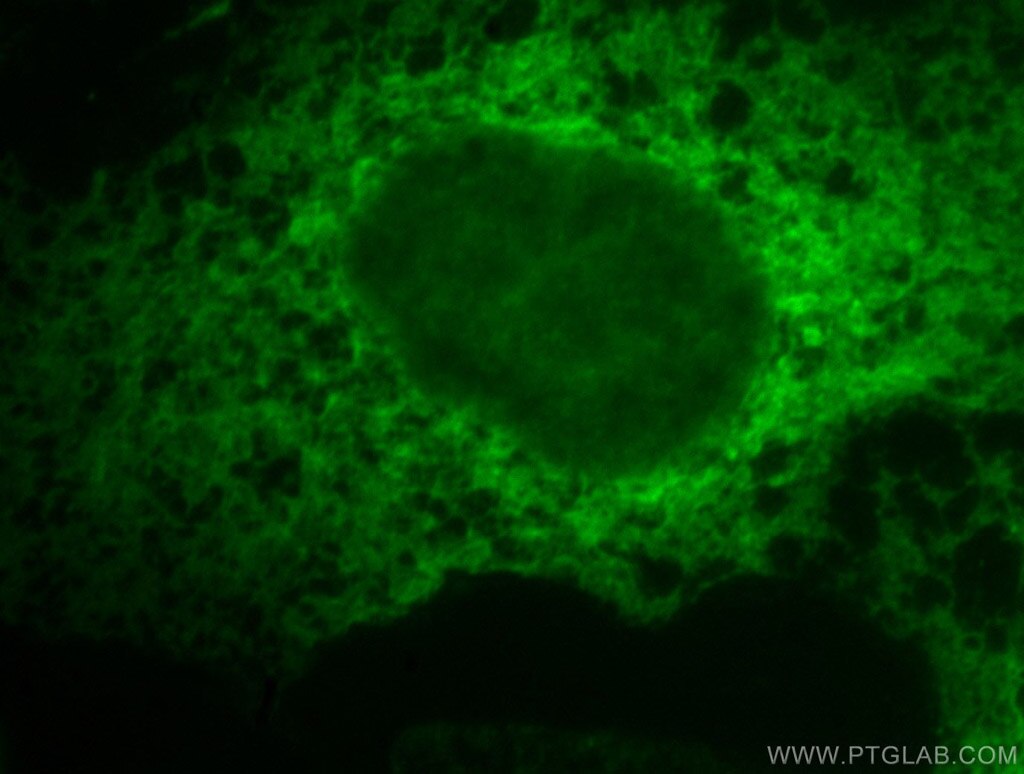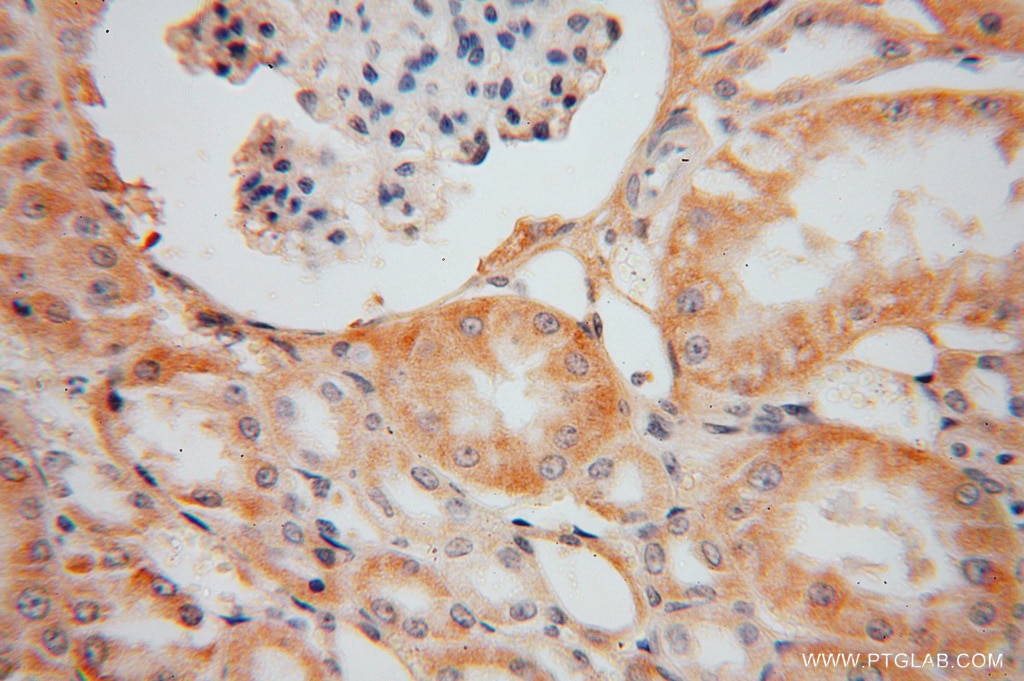- Featured Product
- KD/KO Validated
CISD2 Polyklonaler Antikörper
CISD2 Polyklonal Antikörper für WB, IHC, IF/ICC, IP, ELISA
Wirt / Isotyp
Kaninchen / IgG
Getestete Reaktivität
human, Maus, Ratte und mehr (1)
Anwendung
WB, IHC, IF/ICC, IP, CoIP, ELISA
Konjugation
Unkonjugiert
Kat-Nr. : 13318-1-AP
Synonyme
Galerie der Validierungsdaten
Geprüfte Anwendungen
| Erfolgreiche Detektion in WB | Mausnierengewebe, humanes Hirngewebe, Mausherzgewebe, Maushirngewebe, Rattennierengewebe |
| Erfolgreiche IP | Maushirngewebe |
| Erfolgreiche Detektion in IHC | humanes Leberkarzinomgewebe Hinweis: Antigendemaskierung mit TE-Puffer pH 9,0 empfohlen. (*) Wahlweise kann die Antigendemaskierung auch mit Citratpuffer pH 6,0 erfolgen. |
| Erfolgreiche Detektion in IF/ICC | HepG2-Zellen |
Empfohlene Verdünnung
| Anwendung | Verdünnung |
|---|---|
| Western Blot (WB) | WB : 1:2000-1:10000 |
| Immunpräzipitation (IP) | IP : 0.5-4.0 ug for 1.0-3.0 mg of total protein lysate |
| Immunhistochemie (IHC) | IHC : 1:50-1:500 |
| Immunfluoreszenz (IF)/ICC | IF/ICC : 1:200-1:800 |
| It is recommended that this reagent should be titrated in each testing system to obtain optimal results. | |
| Sample-dependent, check data in validation data gallery | |
Veröffentlichte Anwendungen
| KD/KO | See 8 publications below |
| WB | See 24 publications below |
| IHC | See 11 publications below |
| IF | See 4 publications below |
| CoIP | See 1 publications below |
Produktinformation
13318-1-AP bindet in WB, IHC, IF/ICC, IP, CoIP, ELISA CISD2 und zeigt Reaktivität mit human, Maus, Ratten
| Getestete Reaktivität | human, Maus, Ratte |
| In Publikationen genannte Reaktivität | human, drosophila, Maus, Ratte |
| Wirt / Isotyp | Kaninchen / IgG |
| Klonalität | Polyklonal |
| Typ | Antikörper |
| Immunogen | CISD2 fusion protein Ag4172 |
| Vollständiger Name | CDGSH iron sulfur domain 2 |
| Berechnetes Molekulargewicht | 135 aa, 15 kDa |
| Beobachtetes Molekulargewicht | 13-15 kDa |
| GenBank-Zugangsnummer | BC032300 |
| Gene symbol | CISD2 |
| Gene ID (NCBI) | 493856 |
| Konjugation | Unkonjugiert |
| Form | Liquid |
| Reinigungsmethode | Antigen-Affinitätsreinigung |
| Lagerungspuffer | PBS mit 0.02% Natriumazid und 50% Glycerin pH 7.3. |
| Lagerungsbedingungen | Bei -20°C lagern. Nach dem Versand ein Jahr lang stabil Aliquotieren ist bei -20oC Lagerung nicht notwendig. 20ul Größen enthalten 0,1% BSA. |
Hintergrundinformationen
CISD2 gene encodes a 15 kDa CDGSH iron-sulfur domain-containing protein 2, which is also named Miner1 or NAF-1, this protein was reported on the endoplasmic reticulum membrane or mitochondrion outer membrane. Defects in CISD2 are the cause of Wolfram syndrome type 2 (WFS2), a rare disorder characterized by juvenile-onset insulin-dependent diabetes mellitus with optic atrophy. CISD2 regulates the autophagy program by interacting with BCL2, contributing to antagonizing BECN1-mediated cellular autophagy at the endoplasmic reticulum.
Protokolle
| Produktspezifische Protokolle | |
|---|---|
| WB protocol for CISD2 antibody 13318-1-AP | Protokoll herunterladen |
| IHC protocol for CISD2 antibody 13318-1-AP | Protokoll herunterladen |
| IF protocol for CISD2 antibody 13318-1-AP | Protokoll herunterladen |
| IP protocol for CISD2 antibody 13318-1-AP | Protokoll herunterladen |
| FC protocol for CISD2 antibody 13318-1-AP | Protokoll herunterladen |
| Standard-Protokolle | |
|---|---|
| Klicken Sie hier, um unsere Standardprotokolle anzuzeigen |
Publikationen
| Species | Application | Title |
|---|---|---|
Proc Natl Acad Sci U S A A calcium-dependent protease as a potential therapeutic target for Wolfram syndrome.
| ||
EMBO Rep Chemical targeting of NEET proteins reveals their function in mitochondrial morphodynamics.
| ||
Oncotarget Overexpressed CISD2 has prognostic value in human gastric cancer and promotes gastric cancer cell proliferation and tumorigenesis via AKT signaling pathway.
| ||
FASEB J A young testicular microenvironment protects Leydig cells against age-related dysfunction in a mouse model of premature aging.
| ||
Oncotarget A novel prognostic score model incorporating CDGSH Iron Sulfur Domain2 (CISD2) predicts risk of disease progression in laryngeal squamous cell carcinoma. |
